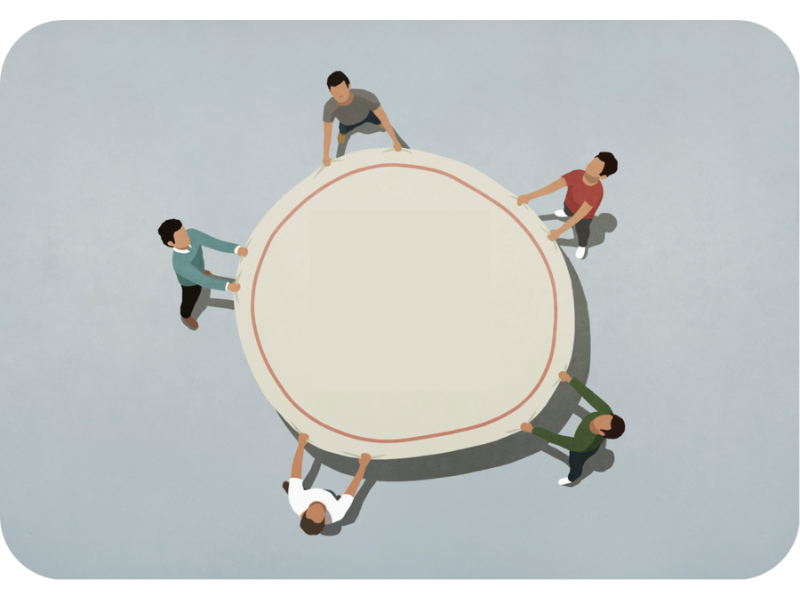To unravel this mystery, Professor Amy Edmondson of Harvard Business School examined teams of healthcare professionals in hospitals. She aimed to find a correlation between mistakes and teamwork. The hypothesis seemed straightforward: the most effective teams should make the fewest mistakes. However, the results turned this assumption on its head.
Professor Edmondson and Project Aristotle unearthed a groundbreaking insight when they found that the best-performing teams were making more errors. To understand this paradox, we need to delve into the idea of psychological safety.
Psychological safety means taking risks and embracing mistakes
At its core, psychological safety is the shared belief among team members that it is not just okay but encouraged to take risks, raise concerns, ask difficult questions, and admit mistakes without fear of repercussions.
The hospital team that made the most mistakes also had the best team dynamics. Why? They weren’t less competent or attentive than their counterparts, but they reported more errors because they felt safe taking responsibility for them. The result was a team that learned from each other and improved processes to avoid future pitfalls.
Project Aristotle key findings:
- Team Composition Matters Less: Who is on the team matters less than how the team works together.
- Psychological Safety Is Paramount: The most critical factor influencing team effectiveness is psychological safety.
The cost of lacking psychological safety
Think about those moments in your career when you found yourself walking on eggshells, hesitant to broach sensitive topics. Perhaps your superiors seemed impervious to constructive input, or critiques of a project were taken as personal attacks. It’s akin to navigating a minefield, where a single misstep can trigger verbal explosions and criticism. In these moments, the path of least resistance is silence. When you have to dance around a minefield to provide input, it’s easier to disengage and observe from the sidelines. You couldn’t see it then, but you could feel it—the absence of psychological safety.
In environments lacking psychological safety, concerns remain unvoiced, errors are concealed, and problematic endeavors proceed unchecked. This default reaction breeds organizational apathy, leading to increased stress, burnout, turnover, and underperformance.
From fear to fearless: how psychological safety transforms workplaces
Psychological safety is a catalyst for innovation, engagement, and ultimately, healthier workplaces:
Enhances decision making
A culture of psychological safety fosters a learning environment where employees can collectively learn from one another’s mistakes. Well-informed decisions can only happen when there is space for team members to challenge the status quo, share their diverse perspectives, voice half-baked ideas, brainstorm out loud, ask for help, and pinpoint potential problems before they manifest.
Fosters a fearless culture
Learning is at the heart of progress, and failure is often the greatest teacher. Psychological safety is paramount when creating an environment where every team member can voice concerns and take responsibility for their mistakes without fear, fostering a culture where setbacks are learning curves.
Fuels innovation and engagement
Employees who feel their input and contributions are valued are more engaged. It creates a sense of belonging and responsibility where employees are invested in their work, transforming the workplace into a hub of collaboration and innovation.
Strengthens health and well-being
When employees feel secure expressing themselves, it reduces the stress and anxiety associated with difficult conversations or seeking help. They take fewer sick days due to stress-related illnesses or to avoid workplace hostility.
Dispelling misconceptions
Let’s address some misconceptions. Psychological safety isn’t about enforcing politeness, being overly nice, or avoiding discomfort. Policing teams for being too candid stifles difficult conversations and silences disagreements, trading short term discomfort for long term dysfunction. Rather, it is about creating an environment where voicing concerns, acknowledging errors, and asking hard questions are not just tolerated but encouraged. Yes, it can be uncomfortable. Vulnerability feels risky. However, these are the building blocks of growth, innovation, creativity, collaboration, and productivity.
The journey of Project Aristotle and the concept of psychological safety offer profound insights for workplace leaders. Embracing psychological safety isn’t just a strategy; it’s a cultural shift. It empowers your team, fuels innovation, and ultimately drives success. As leaders, it’s our responsibility to nurture this environment. When we do, we unlock the full potential of our teams and organizations.

